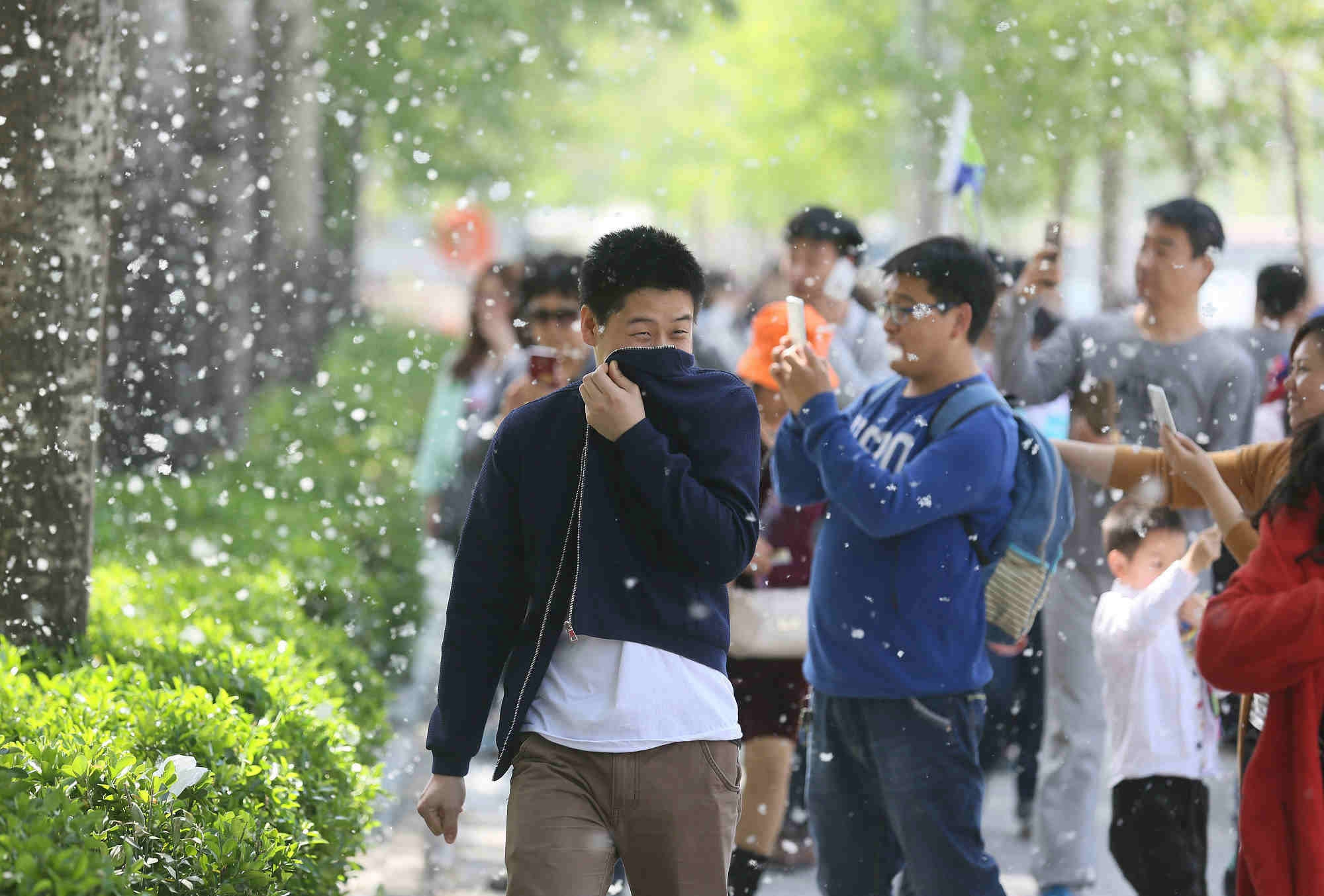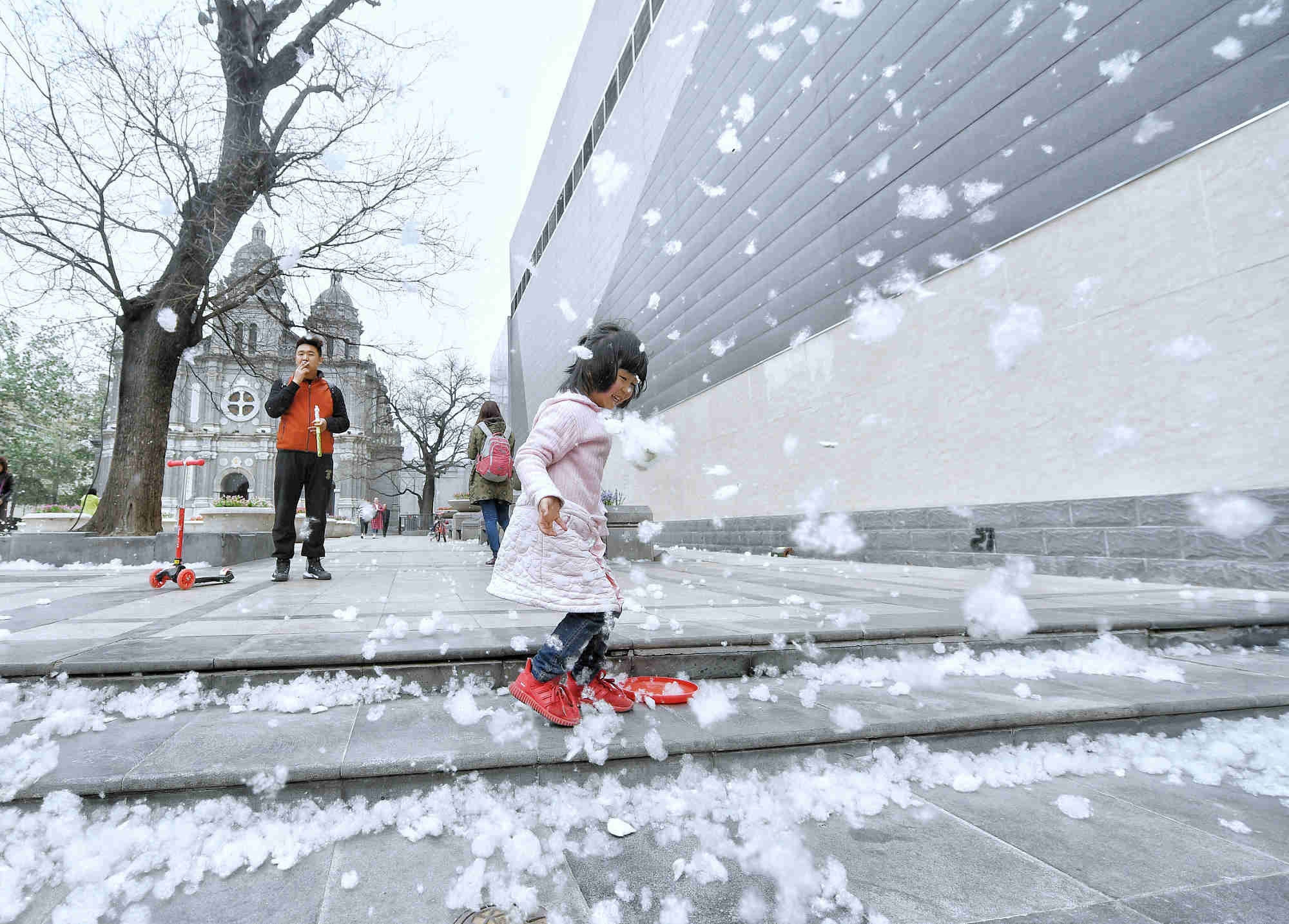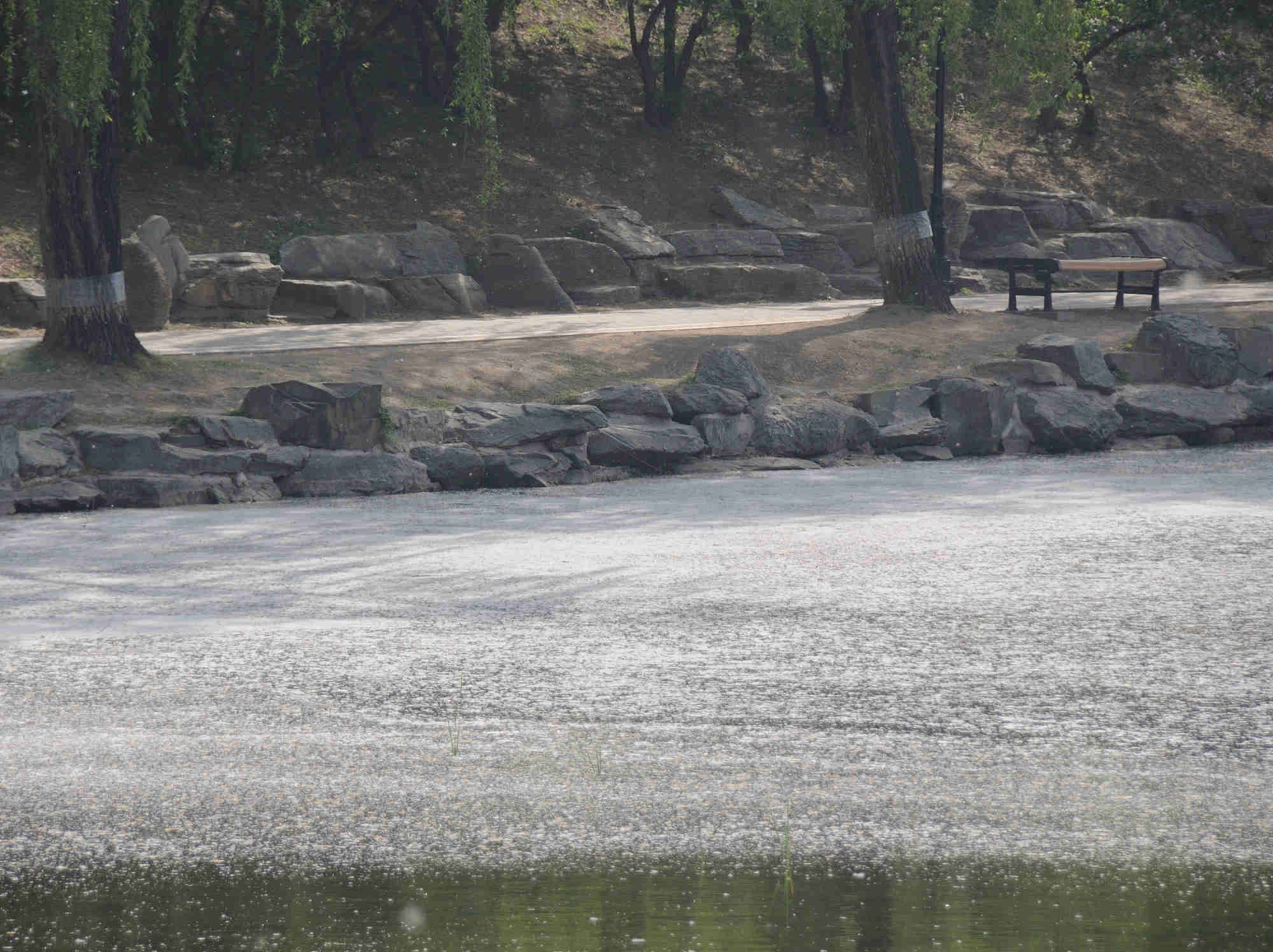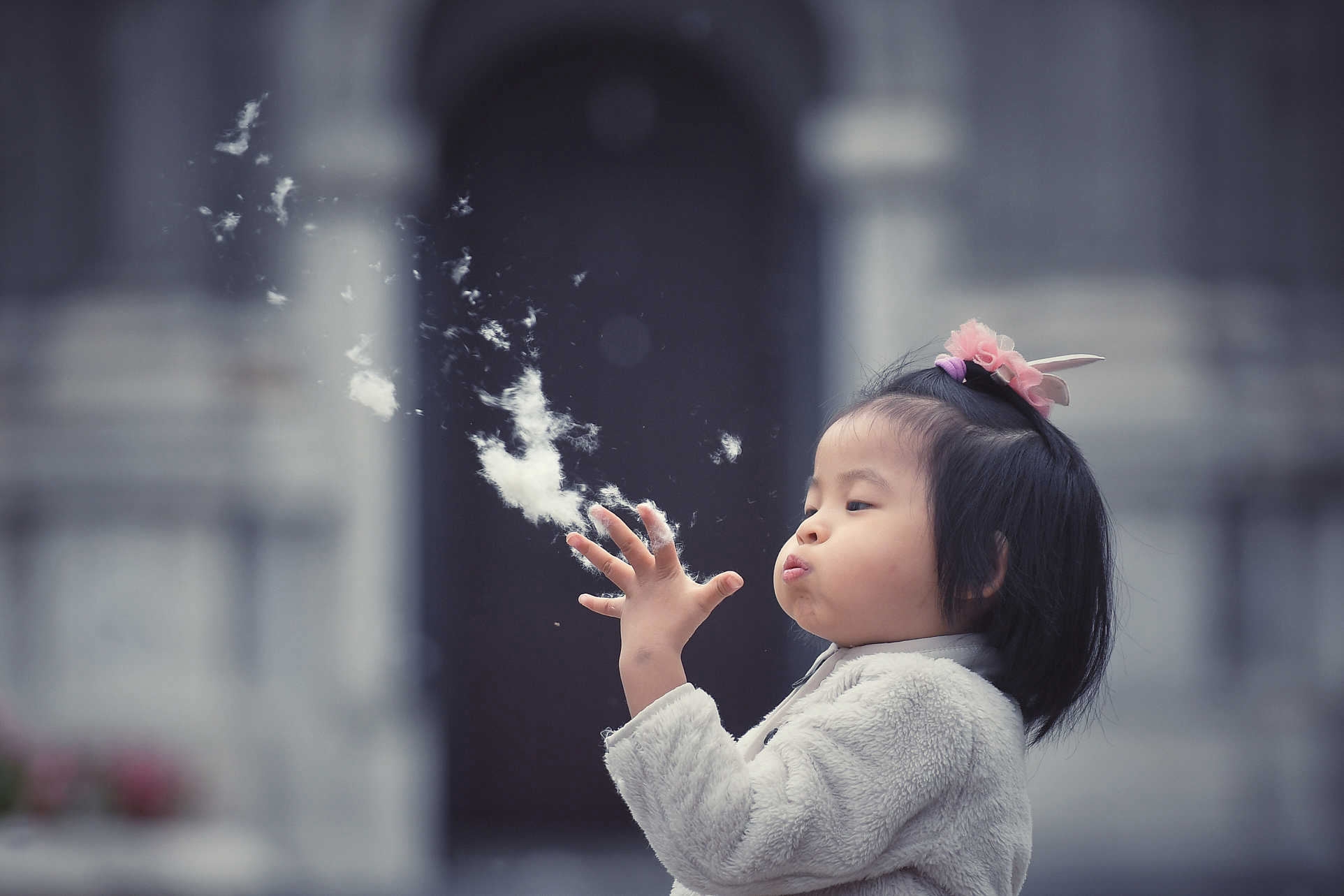Spring is a reprieve for Chinese city dwellers, particularly in the country’s north, who endure harsh winters.
Flowers bloom on trees that looked dead for months. But for Beijing’s residents, flowers bring more than just a splash of color.
In April every year, the Chinese capital is covered by poplar and willow catkins floating in the air.
The fluffy catkins come from the seeds of female poplar and willow trees as part of their natural reproduction.

Residents bothered by poplar and willow tree catkins in Beijing. /CFP Photo
Catkins are mostly harmless, but for some, they do cause respiratory issues.
Most of Beijing’s poplar and willow trees were planted in 1960s and 1970s, when Chinese cities started to invest in urban greenery with limited funds and choices. Beijing stopped planting those type of trees in 2005, but there are still about two million female popular and willow trees, accounting for 5.4 percent of the total.
How to solve the problem?
The floating catkins are often depicted in Chinese literature as part of the beautiful scenery. It has earned the moniker “snow in April”. In real life, the catkins can get old real fast for many residents, who complain of inflamed allergies and the mess the balls of fluff make.

A kid plays with catkins at Wangfujing in Beijing. /CFP Photo
The Beijing municipal government has lined up several measures to get this April snow under control. Starting this year, authorities will create a registry of all willow and poplar trees in the capital. These trees will be grafted, trimmed, and injected with chemicals to inhibit their reproduction.
Meanwhile, Beijing is planning to expand its green spaces by 600 hectares, and to construct at least 15 new parks.
Experts warn against the cutting down of these trees, saying the benefit of these trees far outweigh the problems they cause.
“Beijing has a large number of poplar and willow trees of various strains, and most of them are grown. Chopping down those trees would degrade the quality of the environment and landscape, or even cause serious ecological losses,” said Shen Guofang of the Chinese Academy of Engineering.
How to cope with the catkins?
Some said the capital’s residents should simply accept the catkins as a fact of yearly life. Others offered solutions to keep the problem under control.

Lake covered with catkins in Yuanmingyuan Park, or the Old Summer Palace. /CFP Photo
Dr. Guo Xiheng of Chaoyang Hospital said catkins do not cause health problems for a majority of Beijing’s residents. People with allergies may experience itchy eyes and throats. In bad cases, the catkins may lead to asthma.
Wearing masks – as most Beijing residents are used to doing during smoggy days – may help alleviate symptoms. Others may also opt for desensitization treatment.

A kid blows catkin away from her hand. /CFP Photo
Guo also suggested the susceptible people to eat healthier.
These measures to mitigate the effects of catkins are all just temporary. A more permanent solution is on the horizon. According to Beijing’s municipal plan, all poplar and willow trees will be eliminated by 2020. Enjoy – or suffer – them while you can.
1km










